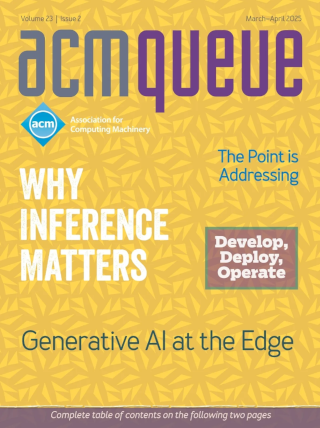Is Persistent Memory Persistent?:
A simple and inexpensive test of failure-atomic update mechanisms
Power failures pose the most severe threat to application data integrity, and painful experience teaches that the integrity promises of failure-atomic update mechanisms can’t be taken at face value. Diligent developers and operators insist on confirming integrity claims by extensive firsthand tests. This article presents a simple and inexpensive testbed capable of subjecting storage devices, system software, and application software to ten thousand sudden whole-system power-interruption tests per week.
Persistent Memory Programming on Conventional Hardware:
The persistent memory style of programming can dramatically simplify application software.
Driven by the advent of byte-addressable non-volatile memory, the persistent memory style of programming will gain traction among developers, taking its rightful place alongside existing paradigms for managing persistent application state. Until NVM becomes available on all computers, developers can use the techniques presented in this article to enjoy the benefits of persistent memory programming on conventional hardware.
Leaking Space:
Eliminating memory hogs
A space leak occurs when a computer program uses more memory than necessary. In contrast to memory leaks, where the leaked memory is never released, the memory consumed by a space leak is released, but later than expected. This article presents example space leaks and how to spot and eliminate them.
A Lesson in Resource Management:
Waste not memory, want not memory—unless it doesn’t matter
Dear KV, I’ve been reworking a device driver for a high-end, high-performance networking card and I have a resource allocation problem. The devices I’m working with have several network ports, but these are not always in use; in fact, many of our customers use only one of the four available ports. It would greatly simplify the logic in my driver if I could allocate the resources for all the ports -- no matter how many there are -- when the device driver is first loaded into the system, instead of dealing with allocation whenever an administrator brings up an interface.
A File System All Its Own:
Flash memory has come a long way. Now it’s time for software to catch up.
In the past five years, flash memory has progressed from a promising accelerator, whose place in the data center was still uncertain, to an established enterprise component for storing performance-critical data. It’s rise to prominence followed its proliferation in the consumer world and the volume economics that followed (see figure 1). With SSDs (solid-state devices), flash arrived in a form optimized for compatibility - just replace a hard drive with an SSD for radically better performance. But the properties of the NAND flash memory used by SSDs differ significantly from those of the magnetic media in the hard drives they often displace.
You Don’t Know Jack about Shared Variables or Memory Models:
Data races are evil.
A Google search for "Threads are evil" generates 18,000 hits, but threads are ubiquitous. Almost all of the processes running on a modern Windows PC use them. Software threads are typically how programmers get machines with multiple cores to work together to solve problems faster. And often they are what allow user interfaces to remain responsive while the application performs a background calculation.
The Five-Minute Rule 20 Years Later: and How Flash Memory Changes the Rules:
The old rule continues to evolve, while flash memory adds two new rules.
In 1987, Jim Gray and Gianfranco Putzolu published their now-famous five-minute rule for trading off memory and I/O capacity. Their calculation compares the cost of holding a record (or page) permanently in memory with the cost of performing disk I/O each time the record (or page) is accessed, using appropriate fractions of prices for RAM chips and disk drives. The name of their rule refers to the break-even interval between accesses. If a record (or page) is accessed more often, it should be kept in memory; otherwise, it should remain on disk and read when needed.
Flash Storage Today:
Can flash memory become the foundation for a new tier in the storage hierarchy?
The past few years have been an exciting time for flash memory. The cost has fallen dramatically as fabrication has become more efficient and the market has grown; the density has improved with the advent of better processes and additional bits per cell; and flash has been adopted in a wide array of applications. The flash ecosystem has expanded and continues to expand especially for thumb drives, cameras, ruggedized laptops, and phones in the consumer space.




